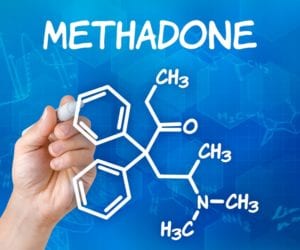Methadone Addiction Signs and How to Spot Them

How Methadone Addiction Starts
Methadone is one of the most effective and common drugs used to treat opioid addiction. Unfortunately, it has its own risk of abuse and addiction, since its composition and effects are similar to other opioids like heroin, morphine, and prescription painkillers. However, that does not mean that methadone does not have a valuable use when treating other addictions. Its oral application, long duration of effectiveness, and its lower tolerance make it a valuable tool in opioid addiction treatment. That being said, when used without medical supervision or prescription it can be just as addictive as other opioids, and the methadone addiction signs are soon to follow after abuse has started.
Typically, this is how methadone addiction starts. Patients begin treatment for withdrawals of other opioids, only to start abusing the medication separately from their treatment. This can lead to health risks, methadone overdose, and a significantly harder withdrawal from other opioids if they ever return to them.
What Are the Methadone Addiction Signs
Unlike traditional opioids, methadone has an extremely long-lasting effectiveness. With a twenty-two hour half-life, methadone takes the cake for longest lasting opioid when compared to substances like heroin, with relatively short thirty-minute half-lives. Unlike heroin which has become well known for its extreme highs when taken, and extreme lows during withdrawal, methadone has much more mild highs and lows, due to its less potent nature. The nature of methadone is the main reason it is used for opioid treatment since it can help patients avoid some of the more intense withdrawal symptoms associated with opioid detoxes, but this nature also makes spotting methadone addiction signs harder than similar opioids.
Physical Methadone Addiction Signs
While methadone is very different from other opioids, some of the physical symptoms of methadone addiction are similar. Keep in mind that these symptoms may be less severe than other opioid addiction symptoms as methadone is less potent, but the signs are still present and may be severe if the drug has been abused for an extended period of time. Here are the physical methadone addiction signs:
- Nausea
- Irregular or Increased Sweating
- Constricted Pupils
- Trouble Passing Bowel Movements or Constipation
- Increased Sensitivity to Pain
- Slowed or Labored Breathing
Behavioral, Mental and Emotional Methadone Addiction Signs
While opioid treatment is generally how methadone addiction starts, it is still a valid form of treatment, and a very effective and helpful one when done correctly. It’s the use and abuse of methadone outside of a doctor’s medical supervision and care that should cause alarm for friends, family members, and fellow recovering addicts. While most drug addicts are going to lie when confronted with questions like “Are you abusing methadone?”, there are some behavioral methadone addiction signs that can be very telling of whether or not a person is using methadone outside of its intended treatment.
- Having multiple methadone prescriptions, or attempting to gain multiple methadone prescriptions
- Using more methadone than is prescribed.
- Skipping prescribed dosage times, opting to save or stockpile doses for greater effect later on.
- Using friends, drug dealers, or sources other than treatment clinics to obtain methadone.
- A noticeable change in overall priorities, placing methadone at the top or near the top.
If you have any of these basic symptoms, or if someone you know if displaying a number of these symptoms, it may be time to speak with them about the dangers of methadone abuse, the risk of methadone overdose, and methadone addiction treatment. While methadone is a prescription drug, and it has many benefits, it can also be extremely dangerous when taken incorrectly.
The Risk of Methadone Overdose and the Benefits of Methadone Addiction Treatment
While fine incorrect dosing under medical supervision, long-term abuse of methadone can have serious effects on the health of a user. These negative side-effects can vary person-to-person depending on the intensity of the abuse and the length of the substance abuse, but generally, these side effects include: severely impaired judgment, erectile dysfunction in men, sexual dysfunction in women, respiratory failure, blood-borne diseases, and an ever-increasing risk of a methadone overdose.
Methadone overdose is a major concern and one that continues to be a problem amongst substance abusers. This is especially true when it comes to mixing medications, as many users will mix their methadone with substances like alcohol, benzodiazepines, and other opioids. Mixing these forms of medication can cause the body to slow to an unhealthy and in some cases deadly, rate, causing methadone overdose in the form of heart or respiratory failure.
If you or a loved one needs help with abuse and/or treatment, please call the WhiteSands Treatment at (877) 855-3470. Our addiction specialists can assess your recovery needs and help you get the addiction treatment that provides the best chance for your long-term recovery.
